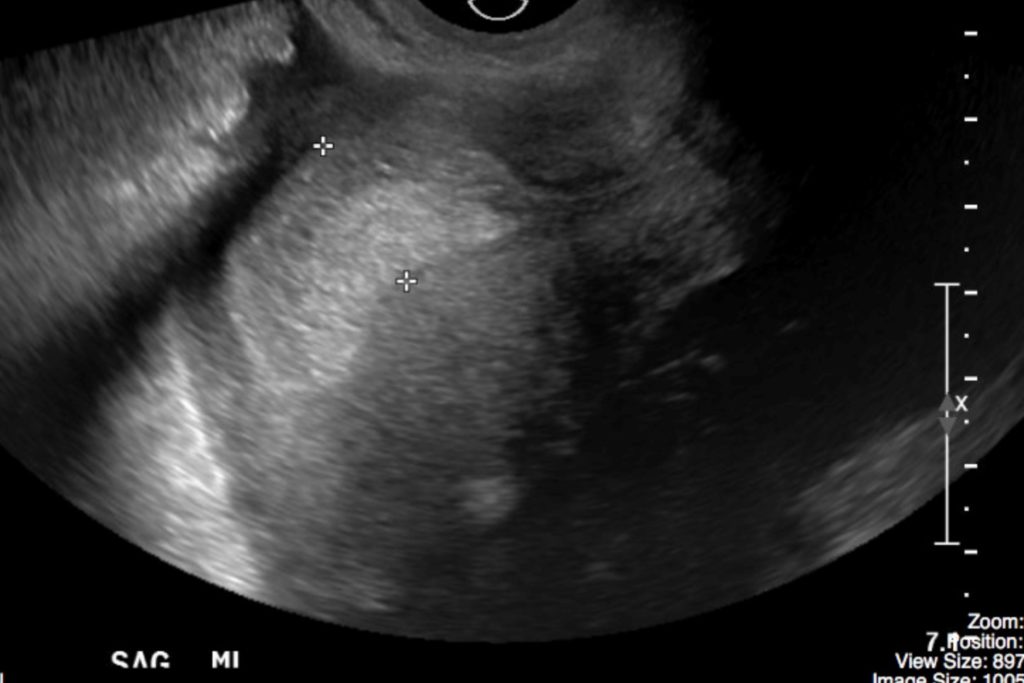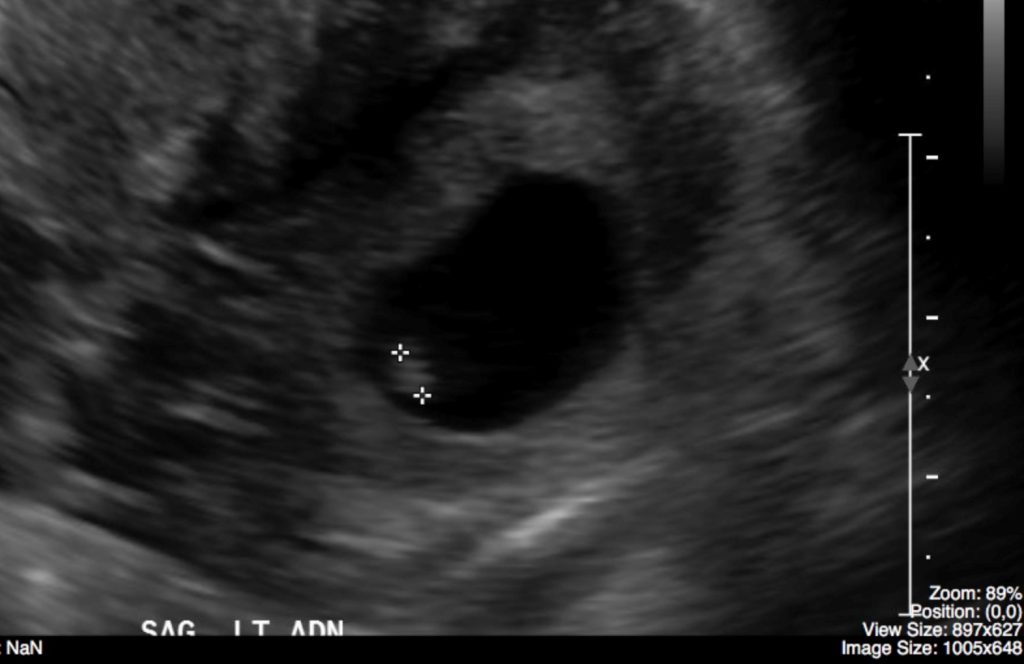73
ACR Women’s Imaging – Acute Pelvic Pain in the Reproductive Age Group
Case
Ectopic Pregnancy
Clinical:
History – This 25 year old female presented with moderate to severe pelvic pain in pregnancy. She believed that she was approximately 8 weeks pregnant.
Symptoms – Pelvic pain, no bleeding.
Physical – The left pelvis was exquisitely tender on examination. The patient was pale.
Laboratory – Mild anemia. Serum BHcG – positive.
DDx:
Pelvic Cyst
Ectopic Pregnancy
Pelvic Inflammatory Disease
Imaging Recommendation
ACR Women’s Imaging – Acute Pelvic Pain in the Reproductive Age Group
Pelvic Ultrasound


Imaging Assessment
Findings:
There was a small amount of free fluid in the pelvis. A thick endometrium was seen with no evidence of an intrauterine gestational sac.
There was a gestational sac in the region of the left adnexa. It contained a fetal pole and a yolk sac. A fetal heart beat was detected in the fetal pole.
Interpretation:
Left Adnexal Ectopic Pregnancy
Diagnosis:
Ectopic Pregnancy
Discussion:
Most often, an ectopic location is diagnosed by a combination of findings that includes the absence of an identifiable intrauterine pregnancy, often with an extrauterine, extraovarian complex cystic mass, and in which the quantitative serum human chorionic gonadotropin hormone (β-HCG) rises above the discriminatory level, at which point a normal intrauterine pregnancy should almost always be identified. If those criteria are met, an ectopic pregnancy is presumed present.
The beta (β) subunit of HCG is specific for the hormone produced by placental tissue shortly after the implantation of a fertilized ovum in the uterus. The levels of HCG roughly double every 2 to 3 days in a normal pregnancy. At a β-HCG level more than 3,000 milli-international units per milliliter (mIU/mL), a normal intrauterine pregnancy should be visible with transvaginal US. If not, the current recommendation calls for a repeat β-HCG test and US before undertaking treatment for ectopic pregnancy. Serial β-HCG determinations may help in differentiating an ectopic pregnancy from an early abortion, both of which may display similar sonographic findings. Patients with an early abortion will display falling β-HCG levels on serial serum studies, whereas these levels will rise in ectopic pregnancies, though usually more slowly than in normal intrauterine pregnancies.
An ectopic pregnancy is also presumed present when there are large amounts of free fluid (blood) inside the abdominal cavity. Small amounts of free fluid can develop for other reasons, such as spontaneous abortion, ruptured ovarian cysts, and normal ovulation.
Attributions
Figure 11.5A Sagittal ultrasound of female pelvis demonstrating thickened, uniformly echogenic, endometrium by Dr. Brent Burbridge MD, FRCPC, University Medical Imaging Consultants, College of Medicine, University of Saskatchewan is used under a CC-BY-NC-SA 4.0 license.
Figure 11.5B Sagittal ultrasound of left uterine adnexal region revealing an extra-uterine gestational sac and fetal pole by Dr. Brent Burbridge MD, FRCPC, University Medical Imaging Consultants, College of Medicine, University of Saskatchewan is used under a CC-BY-NC-SA 4.0 license.
